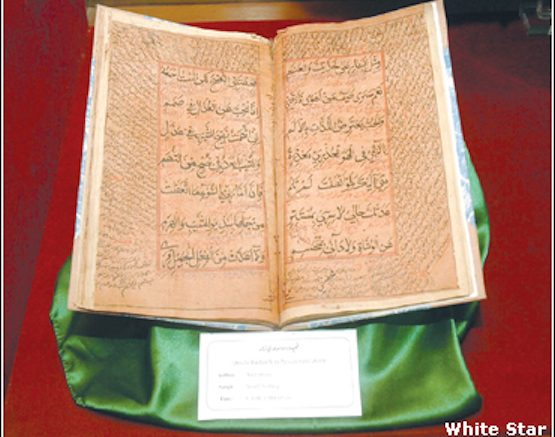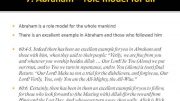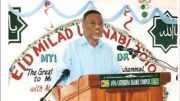KARACHI, May 23: Across the centuries, the faithful have expressed their love for the Holy Prophet of Islam (ﷺ Peace be upon him) in different forms. As far as the written word is concerned, scholars of every age have tried to learn from the blessed life of the Prophet (ﷺ) by attempting to write Sirat-un-Nabi, or biographies of the Holy Prophet (ﷺ).
Some extremely rare manuscripts of Sirah literature have been put on display at the National Museum of Pakistan here as part of a special exhibition on Sirah and Milad literature. Organized by the ministry of culture, the exhibition was inaugurated at the museum premises on Friday.
Speaking during the inauguration ceremony, Mohammad Shah Bukhari, curator of the exhibition, said that out of the museum’s collection of around 10,000 manuscripts, the organisers were only able to put a few on display due to a lack of space. He said that after the Holy Qur’an and hadith, Sirah and Mowlid literature formed the greatest body of Islamic writings. He added that works in Arabic, Persian, Urdu, Pushto and Punjabi are on display.
Some of the pieces being exhibited are over four centuries old and one feels honoured to share the rarefied air with these treasures. Each manuscript is accompanied by a caption which details its title, author, the calligraphic script it has been transcribed in and the name of the scribe.
Most of the manuscripts have been transcribed in the classic Nastaliq font, but there are notable exceptions. For instance the Mowlud Nama by Fattahi Rifati, dating back to the 17th century AD, is written in the Ta’liq script. Other noteworthy manuscripts include Madarij an-Nabuwwa by Shaikh Abd al-Haq Muhadith Dehlavi from the 18th century, as well as a Punjabi translation of the famed Qasida Burda Sharif transcribed by Mian Ameer Baksh.
There is a Mi’raj Nama, which discusses the Night Journey, or Isra wal Mi’raj, of the Holy Prophet (PBUH) dating back to 1659, while another Mi’raj Nama, versified by Syed Balati and written in Nashq script, dates back to 1718.
One of the most outstanding exhibits is a copy of the Qasida Burda Sharif with its Persian translation, transcribed in both Nashq and Nastaliq.
The 17th century manuscript has rose coloured pages and the main text is surrounded by voluminous footnotes. The manuscript of Mishkat al Masabih by Hussain bin Masud al Farr al Baghawi from 1704 also has beautiful footnotes on the sides.
Perhaps the oldest manuscript on display is of Arbaeen, which is a Persian translation of 40 hadith by Abd al-Rahman Jami. Done in Nashq and Thuluth, it dates back to 1577 and is said to be from Mughal Emperor Akbar’s royal library.
Another outstanding work is the Ganjina Na’imat Darain. Compiled and transcribed by Pir Baksh in Thuluth in 1706, it features the 99 appellations of the Holy Prophet (PBUH). Each page is divided into 15 squares and the names have been transcribed in gold. The end result is stunning.
First published in Dawn here.





Be the first to comment on "Documenting devotion: Qasida Burdah dated back to 17th Century"